I took this shot and felt like there was something familiar about it. Was there some artist I was channeling? I don’t want to flatter myself here, just wondering about images of women’s faces – with houses or a bit dwarfed by their landscape.
Maybe I’m being a bit dramatic.
Here’s a few images that may have inspired my subconscious – or at least got me thinking about people, houses, and landscapes. They’re all women, but I don’t think I meant to exclude men (famous last words, right?).
These women are standing on their thresholds, close to the familiarity of their homes but evaluating the world outside. The first looks inspired and awed, the second, defiant and suspicious. (If I were a Black woman in South Carolina in the 50s, that’s how I’d look, too.)
My photo erases my expression, in contrast. I could’ve sworn there was some painting or photograph with half a woman’s face, but I could find anything. If you know what I’m thinking of, I’d love to hear about it in the comments.
No houses in these next paintings, but the shadows on the faces remind me of the filter I used in the shot. Again, I have no illusions that my work in any way aspires to the level of Edvard Munch.
Munch’s women look closed and uncomfortable.
Maybe that’s what I was going for — another portrayal of repression in the suburbs. Pretty cliche, by now. Boring. But it’s hard to resist the repetitive patterns of subdivisions when you have a camera in your hand — they beg to become representations of repression and conformity. Although if you’ve read much else in this blog, you may have realized that’s not the case here in Bolingbrook (my neighbors are White, Black, Hispanic, Indian, Korean…)
Another woman with a house and landscape that overwhelm her…
If I wanted to be coy, I’d throw myself on our lawn and have Adam take my picture in the same pose.
I’ve always loved this painting, but what’s going on? Is the woman longing for the house? Does she dread going back? Is she lonely? In real life, the model was disabled — maybe being out in the field was the only place she felt free, and going back to the house was going into a cage. The metaphors for the myths of suburbia are rife.
Am I overwhelmed by living in the suburbs? Not any more than anyone else, I imagine. Aren’t we all dwarfed in some way by the places we live? The places where we live shape our routines, what our eyes see every day, what we hear, feel, smell, and the kind of light that shines on our faces. The weather, the way the wind blows, the way the water tastes. In different places, people have different relationships to their homes, nature or wild places, commuting, places of worship, and the places they buy things.
I took that picture on a whim in August. But it’s been fun to think about, here.
(Gosh, these are all paintings by male artists. I love them, but interesting that I didn’t choose any paintings by women. Any suggestions?)
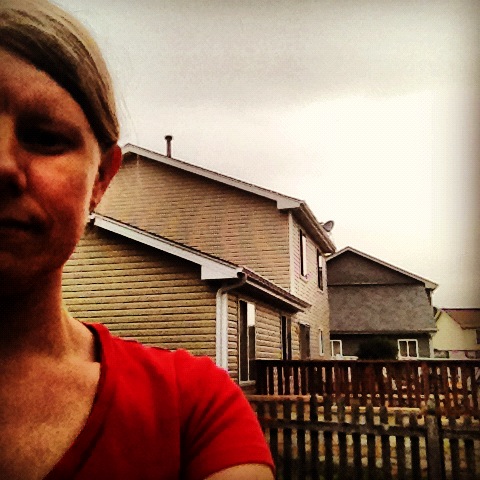
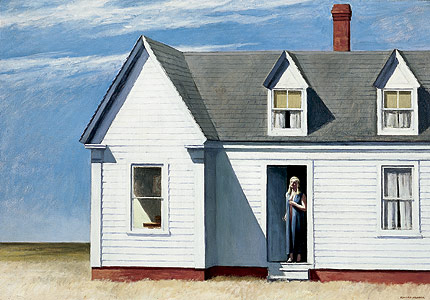
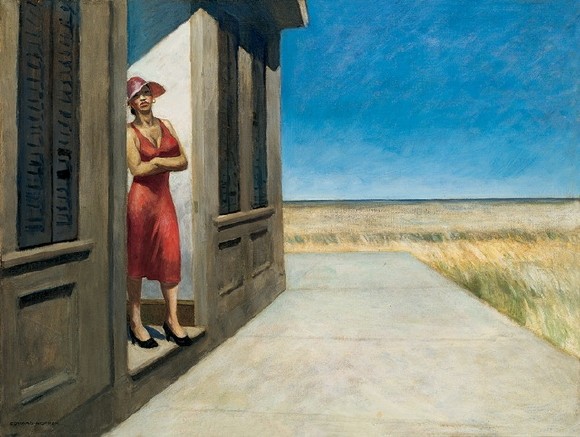
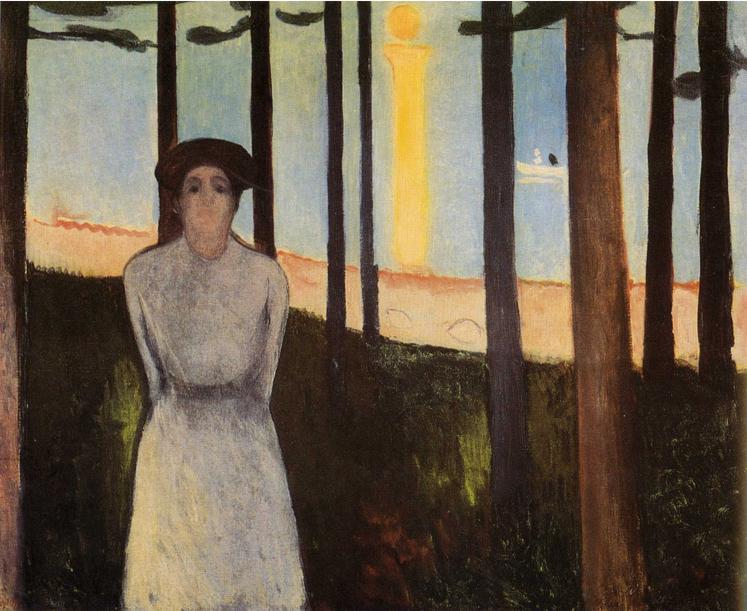
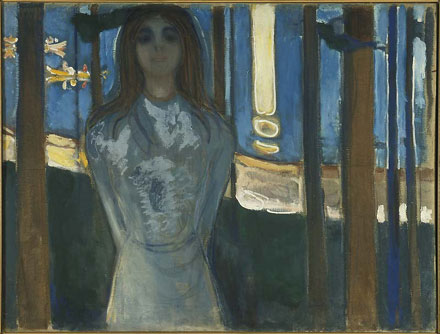
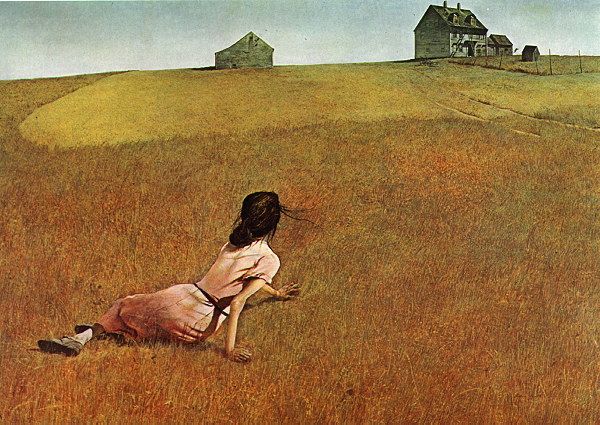



Hey, Vicar! I like the photo a lot. Another interesting difference: yours has fences. Hopper’s and even Munch’s are not carved into lots like that, but feature natural settings (albeit quite different from one another). Peace!